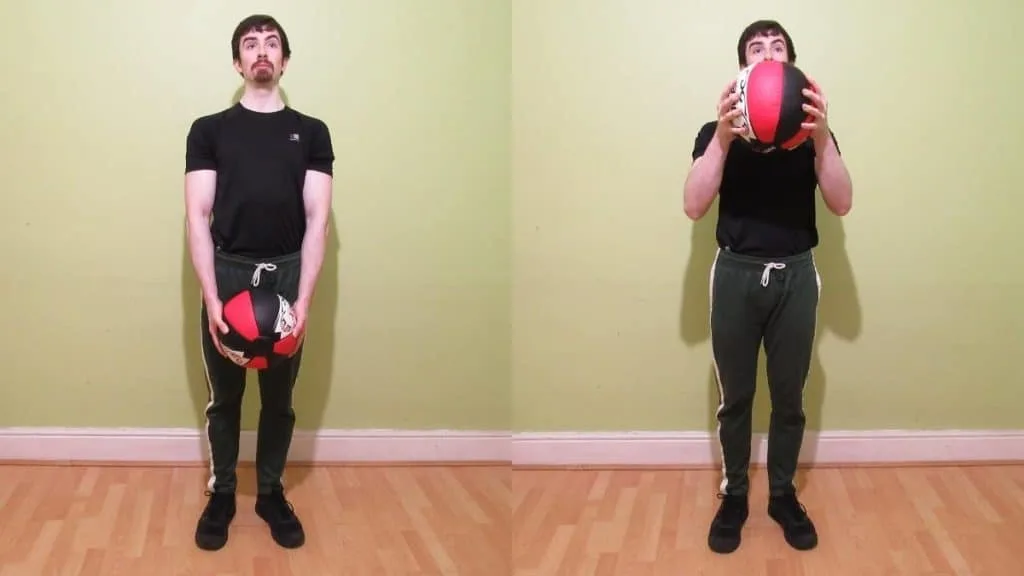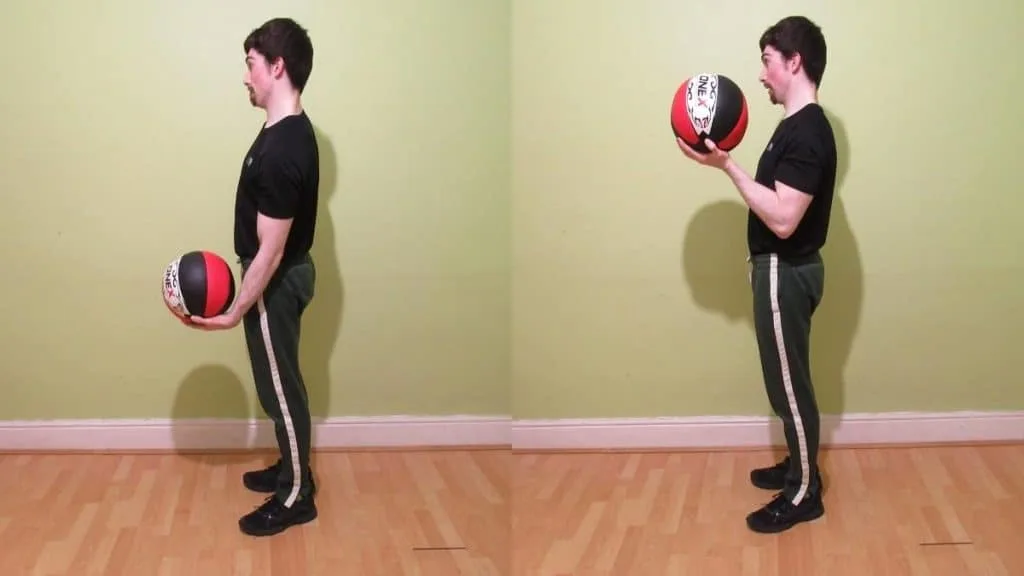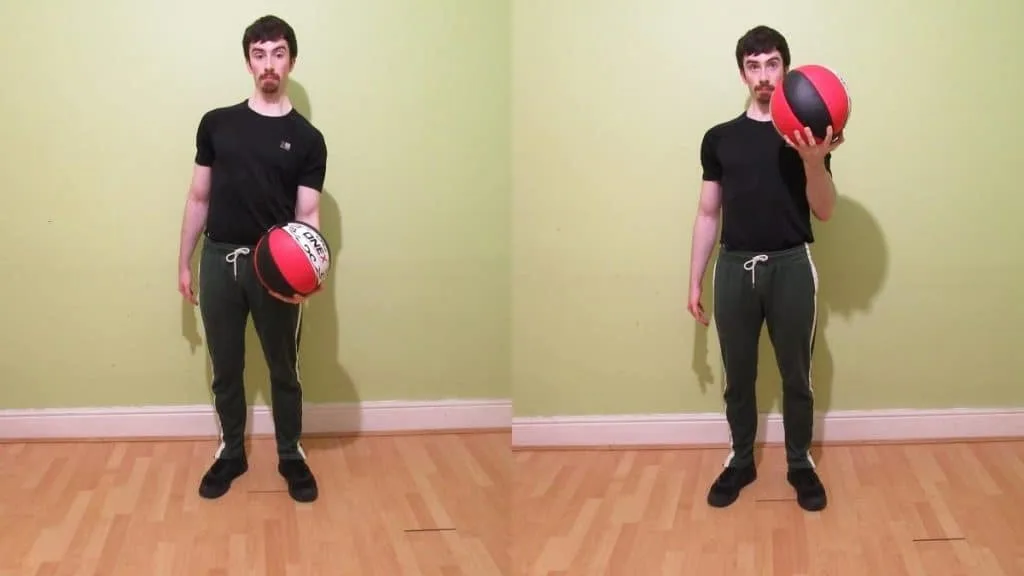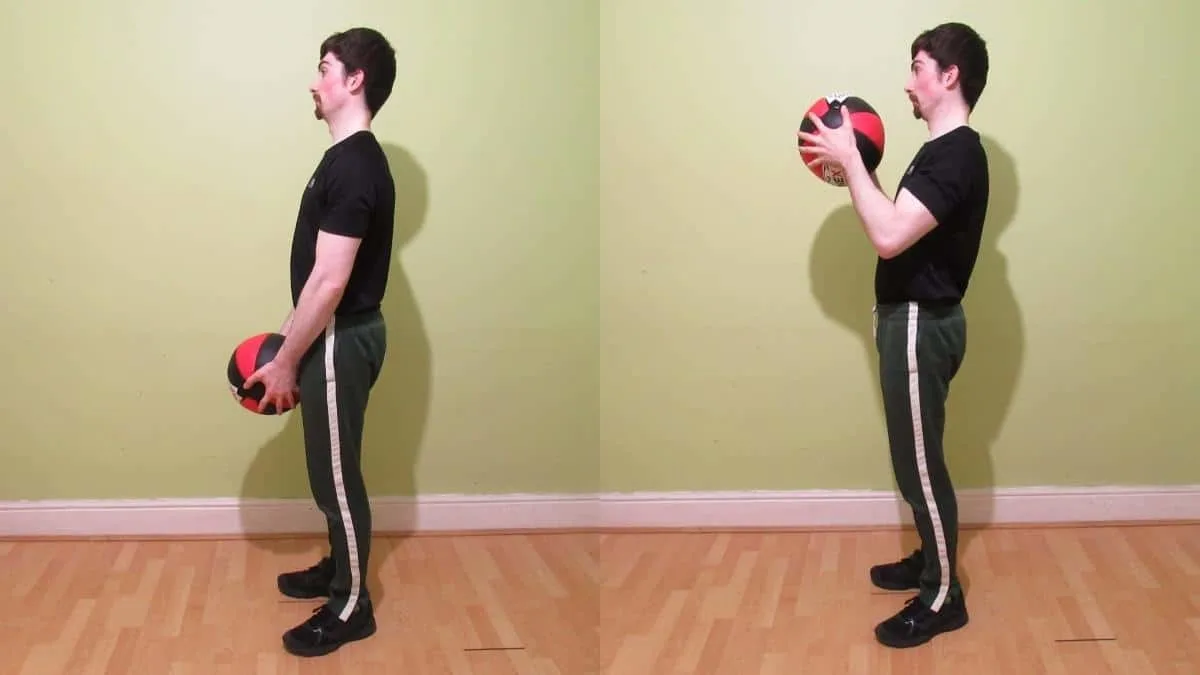Medicine ball curls heavily work the brachioradialis and brachialis muscles in addition to the bicep brachii. They’re a convenient exercise because you can perform them anywhere without the need for free weights. Plus, there are other medicine ball bicep exercises that you can do to emphasize different parts of your arms, which we’ll discuss shortly.
Related: Towel curl
Medicine ball bicep curl exercise details
- Also Known As: Med ball curls
- Main Muscles: Biceps brachii, brachialis, brachioradialis
- Secondary Muscles: Forearm flexors
- Exercise Type: Strength
- Exercise Mechanics: Isolation
- Difficulty Level: Beginner
- Equipment Needed: Medicine ball
How to do medicine ball curls

- Hold a medicine ball by its sides.
- Curl the med ball toward your chest by moving your lower arms toward your biceps.
- Squeeze your biceps as they make forceful contact with your forearms.
- Hold the contraction for a moment and then lower the medicine ball under control until your arms are almost locked out.
- Repeat for 3-5 sets of 8-20 reps.
Medicine ball exercises for the biceps
Most medicine ball bicep exercises actually emphasize the brachioradialis due to the neutral grip. But the variation that you’re about to see is definitely a biceps-first exercise because it has you lift the med ball with supinated palms.
Single arm medicine ball curls

Unlike the standard medicine ball curl, which emphasizes your brachioradialis, the single-arm medicine ball bicep curl primarily trains your biceps. Since you’re working one arm at a time with this movement, it’s also effective for ensuring that both of your biceps receive roughly equal amounts of stimulation.
One arm medicine ball bicep curls are also an excellent exercise for improving your mind-muscle connection because you have to take extra care to keep the ball balanced in your hand.
To perform it, place a medicine ball into the palm of your hand. Curl the med ball toward your front delt while keeping your palm flat. Squeeze your biceps at the top of the rep and then lower the ball slowly until you can’t go any further without the ball rolling off your hand.
While this variation is good for isolating the biceps and improving your wrist control, it’s hard to get a full range of motion because if you lock your elbow out, then the ball might fall off your hand, which would ruin your lifting rhythm.
You can also do bicep curls on a Swiss Ball if you don’t have access to a med ball but still want to work your arms. On the other hand, if you can’t get to a gym at all, then you can do doorway curls to preserve your muscle mass.
In conclusion

Medicine ball curls are a convenient way to build your biceps, brachialis, and brachioradialis. And since med balls come in all shapes and sizes these days, there’s no limit to how much weight you can challenge your arms with. Likewise, you can start off light and build your strength up from there.
The only issue is that it can be hard to gain strength consistently because not all gyms have medicine ball sets that ascend in small increments. Hence, your best bet is to use the medicine ball bicep curl as a secondary exercise and go for the pump as opposed to trying to set PRs.

